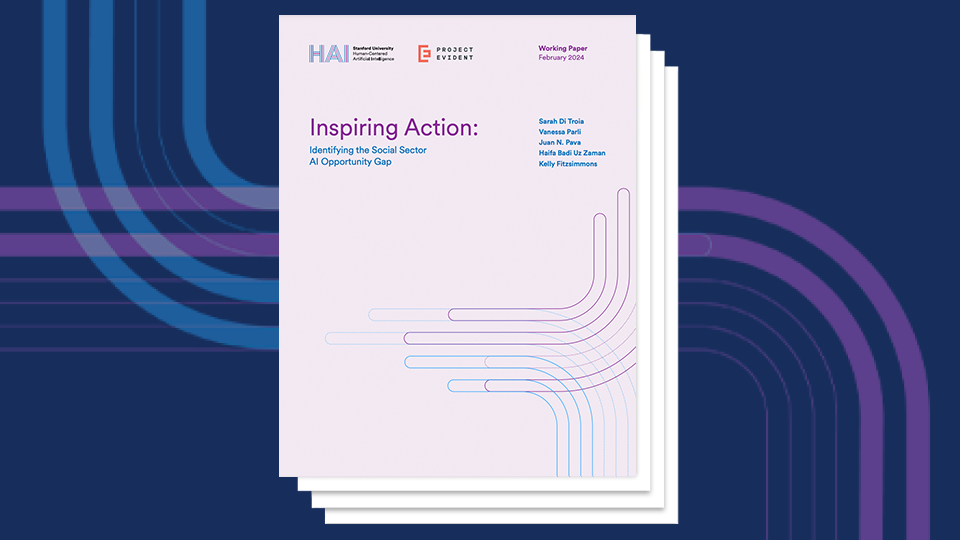Working Paper

Inspiring Action: Identifying the Social Sector AI Opportunity Gap
Sarah Di Troia, Vanessa Parli, Juan N. Pava, Haifa Badi Uz Zaman, Kelly Fitzsimmons
This working paper reveals the untapped potential for leveraging AI for mission-related impact.
Introduction
This national survey is a collaboration between Stanford’s Institute for Human-Centered Artificial Intelligence and Project Evident and was conceived as a project to shed light on the current use of, interest in, and opportunity for AI in the social and education sectors. Over the last decade, AI has reshaped the commercial sector and consumer habits, resulting in significant value creation and profitability—think value created by recommendation systems in e-commerce or streaming services. As it becomes easier to include AI applications (Microsoft Copilot, Google Workspace, OpenAI GPTs) as part of the nonprofit technology stack, the social and education sectors have the same opportunity to deploy AI to create value through enhanced mission-related outcomes.
Key Takeaways
➜ AI already has a considerable presence in the social and education sectors. 48% of funders and 66% of nonprofit respondents claim their organization utilizes some type of AI. Given that nonprofits rely on funders for capital, differences in levels of use could impede AI experimentation in the social and education sectors.
➜ 78% of funders and 77% of nonprofits believe their organization would benefit from using more AI (specifically in mission-related work). This creates an opportunity gap for nonprofits of 14% for traditional AI and 22% for generative AI; for grantmakers, the gap is even larger—26% and 39%, respectively.
➜ Education nonprofits use AI significantly more than other nonprofits. This could be due to the substantial investment in education technology companies that has shaped the field of education and the availability of data.
➜ While most respondents state they use AI in their work, many do not have an organizational policy guiding AI usage (78% of nonprofits and 72% of funders), which introduces risks such as exposing sensitive data or limiting use and experimentation within the organization. This is especially concerning as both nonprofits and funders have access to community-level data collected for management and outcome tracking and reporting.
➜ About 80% of respondents who use AI deploy it for supportive work (finance, human resources, technology, communications, etc.), but only about 60% deploy AI for mission-related work (working with clients, implementing programs, or making grants).
➜ Bias in AI systems is the most cited barrier to AI adoption, followed by challenges in envisioning how AI can be used and a lack of expertise inside the organization. Nonprofits have a particular concern about the cost of AI technology.
➜ Most grantmaker respondents do not have a specific technology grantmaking priority and do not plan to create one in the next year. Instead, funding that goes toward technology is channeled through other priority funding areas.
Read the working paper View all Policy Publications
Authors
Contact
Interested in getting involved with Stanford HAI’s civil society programs?




